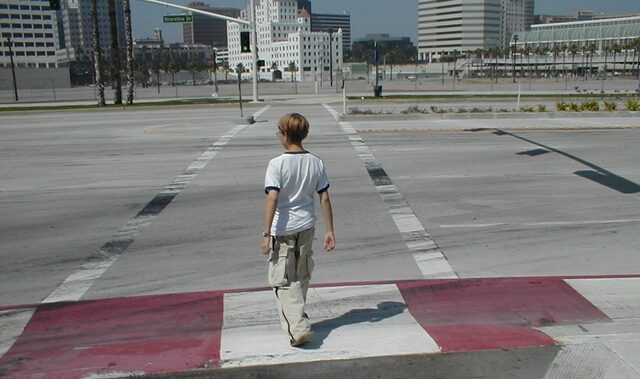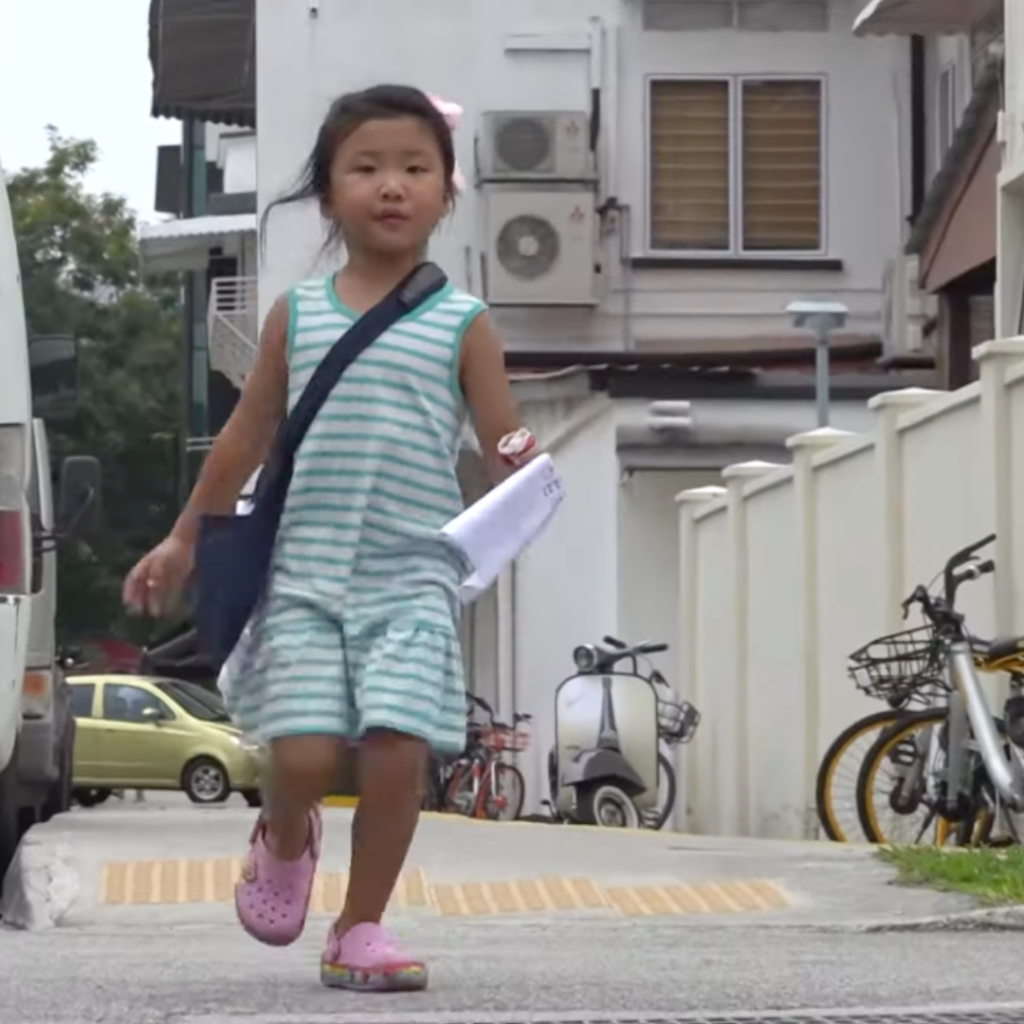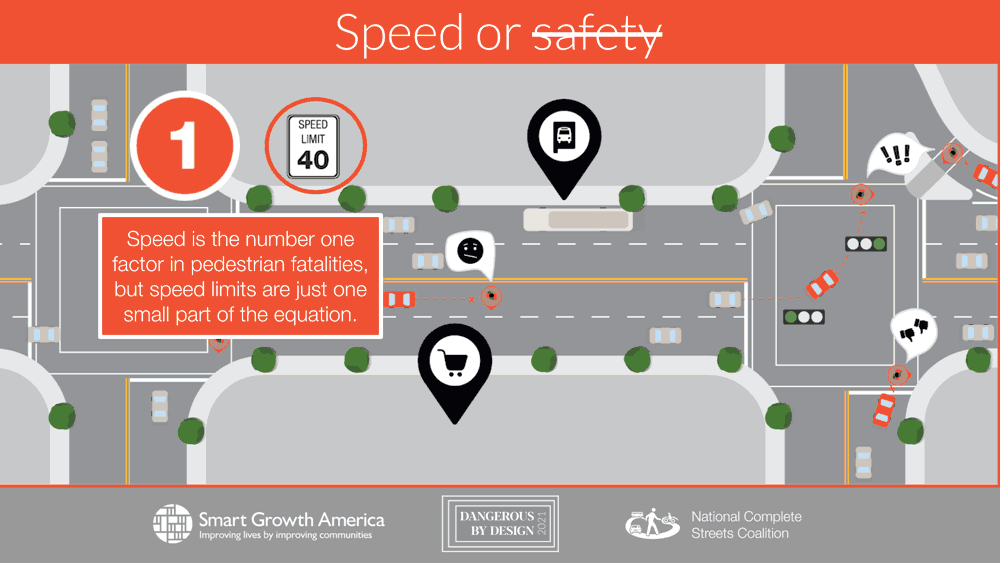We’re living in an arterial world

The 99% Invisible podcast discussed the Netflix show Old Enough, where Japanese children run their first errands, explaining how street design lets the show’s participants be both safe and independent from a young age. We explore the flip side of this coin in the United States, where convenience for cars becomes a major inconvenience for anybody who can’t drive one.
For most of my childhood, I lived along a minor arterial road, right next to the outer loop of the Beltway in Washington, D.C.’s suburbs. Although the speed limit was, and still is, technically 35 mph, the road was wide and unobstructed enough that drivers routinely felt comfortable driving 50 mph, and so they frequently did. Combined with the lack of any shoulder, much less a sidewalk, this meant that the only way for me to access the outside world was through the back of my parent’s station wagon. To go to school, get to soccer practice, have a playdate with a friend, or pick up the jacket I frequently forgot at any of the above locations, one of my parents had to stop whatever they were doing to drive me there and back. When they weren’t available to drive me, I was stuck.
That’s why a recent episode of the 99% Invisible podcast hit so close to home. In the podcast episode, host Roman Mars and reporter Henry Grabar discuss the recently-popularized Netflix show Old Enough—in which elementary school-aged Japanese children run their first errands—and why the children on the show as young as two-and-a-half have so much more independence than their American counterparts.
Despite a shopkeeper helping kids get products from shelves they can’t reach and the existence of social routines like the walking school bus, the real difference-maker is the built environment—the design of the sidewalks and streets, and the layout and shape of the buildings and how they relate to the streets and public spaces—and the kind of lifestyle that these choices make possible. Whereas my elementary school, friends’ houses, and nearest grocery stores were miles away, those destinations are a short walk away for most Japanese children. Whereas all of my destinations were only connected by wide arterial roads filled by people driving at high speeds, the tiny, young participants in Old Enough navigate pedestrian-friendly neighborhood streets. And whereas my life to this day involves looking around parked cars to check for oncoming traffic, this show makes clear that in Japan these obstacles are less frequent. It turns out that everything which allowed my parents to drive me everywhere—high speed roads connecting all of our destinations and ample parking when we got there—is exactly what made it impossible for me to safely get anywhere without them.
This is because safety and speed are irreconcilable when cars and more vulnerable road users (like cyclists and pedestrians) are involved. The elements that make it easier to drive at a high speed—many wide lanes, fewer conflict points, sweeping corners, and less road furniture—simultaneously make walking more dangerous. These design choices present pedestrians with lengthened crossing distances, a reduced number of places to cross, and an experience that’s simply uncomfortable as cars zip by at high speed. That discomfort isn’t unfounded either; should a driver hit a pedestrian, the chance of that person dying increases exponentially with the faster the vehicle is going. As any kid, but especially one who’s just dodged a speeding car on the way to school, can tell you, road design is pretty elementary.

This means that the cost of this tradeoff—safety for speed, vehicular convenience for pedestrian exclusion—is not simply the lack of U.S.-based Netflix shows where five-year-olds go to grocery stores. Pedestrian fatalities have ballooned more than 50 percent over the last decade—in direct contrast to trends in nations like Japan, where they’ve decreased more than 40 percent—with the more than 75 percent increase in these traffic fatalities since 2009 disproportionately impacting Black and Native Americans. Furthermore, this bloodshed is highly concentrated; urban arterials make up just 15 percent of the road network, but are the site of nearly 70 percent of deaths from traffic violence. This makes it clear that an American version of Old Enough doesn’t exist not just because of parenting choices, as some commentary focused on, but because there’s really no age where our communities are safe enough for pedestrians.
Recognizing that design is a leading contributor to traffic deaths gives us the opportunity to reduce the level of danger on our streets. We have simple yet effective tools to make everybody beyond the four doors of a car safer. These include:
- narrowing vehicle lanes and turning radii to slow down drivers;
- banning parking near intersections (at least) to improve visibility for all;
- bumping out intersections and placing pedestrian islands in crosswalks so that crossing distances are shorter;
- building a network of separated and protected bike lanes so that people on bikes aren’t mixed with those driving vehicles weighing multiple tons;
- and even just ensuring sidewalks exist and are well-maintained, so that pedestrians have safe places to walk.
Making these improvements wouldn’t only mean allowing more three-year-olds to take trips to the grocery store. The design of our built environment currently limits everyone’s mobility, especially those who can’t or don’t drive, such as the elderly, visually and physically impaired, economically disadvantaged, and survivors of car crashes. Loved ones, grocery stores, social services, and economic advancement should be just as attainable without a car as they are with a car. By making our roads and streets safer for vulnerable road users—as opposed to relegating pedestrians and cyclists to solely recreational paths and trails—all of the people mentioned above are significantly freer to participate in society. Street design is more than the top vehicle speed for a given corridor; it’s a reflection of who and what activity our society prioritizes.
When I was in middle school, my family moved to a house where I could safely use my bike as transportation, at least to some of the places I wanted to go. Grocery stores and my middle school were still too far to reach, but I was suddenly able to visit friends, go to tennis courts near my house, and just ride my bike for fun. The millions of people across the country who can’t drive (or simply choose not to) can and should experience that same transformation.




















